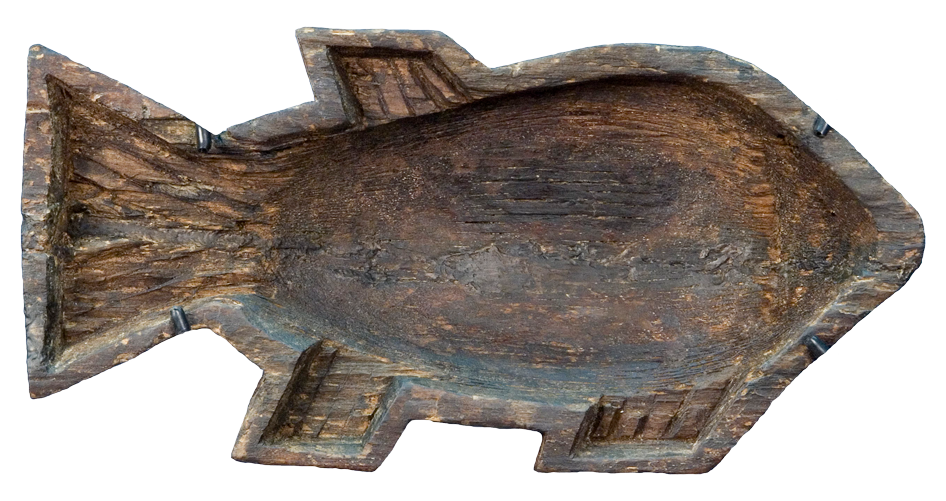Gingerbread form “fish”. Found during archeological excavations in the hillfort Mangazeya – the first Russian city beyond the Polar circle

During the excavations in Mangazeya, among many wooden utensils, the unique gingerbread form in a shape of a fish was found. In antiquity, in the process of use, the form cracked in the middle and then was repaired, in the place of cracking small round holes remained – signs of repair.
More information...Already in the XV - XVI centuries Russian sailors from Arkhangelsk, Mezen and Pustozersk discovered several sea lanes in the Barents and the Kara seas and explored a part of the Northern Sea Route from the Northern Dvina across the creek of the Pechora river to West Siberian rivers. At the end of the XVI century, they regularly were sailing to the creek of the Ob River, from which they later were penetrating into the Yenisei basin. The most famous among the professional sailors-industrialists until the middle of the XVII century remained Mangazeya’s sea lane. It had been explored by Russian Pomors already in the end of the XV century and led from the White Sea through the Taz Estuary of the Kara Sea to lands rich with fur.
In 1601, on the site of a small settlement of the Pomors, in the lower reaches of the Taz river (the territory of the modern Yamalo-Nenets Autonomous District), Mangazeya’s Ostrog (a stockade) was founded. For almost fifty years, Mangazeya remained a major center of fur trade and the only port in the Siberian Polar Circle, which connected Siberian cities with the Arctic Ocean.
Large-scale archaeological research of 1968-1973 and 2000s gave information about the extensive trade relations of Mangazeya, activities and way of life of city residents and local people.
